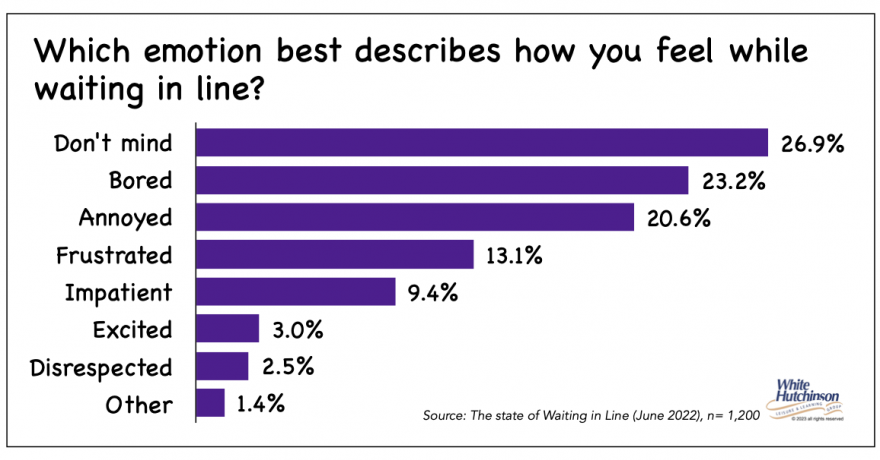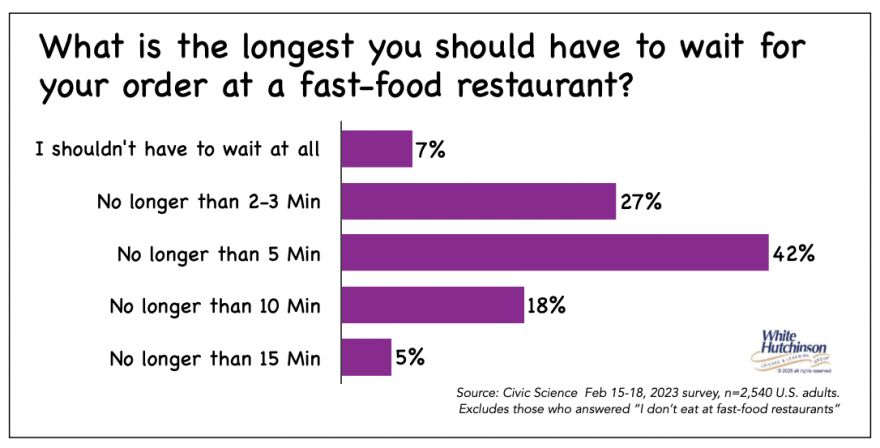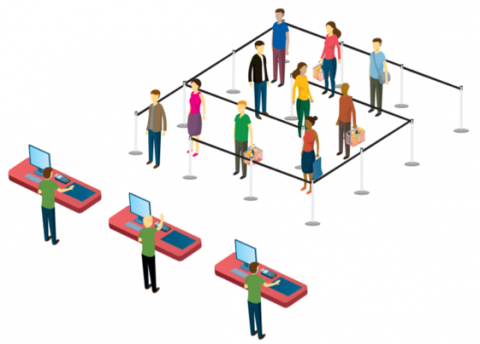
Vol. III, No. 6, June 2025
Long waits reduce revenues and profits

They say patience is a virtue, but it's becoming an exceedingly rare one in modern society. According to surveys, all the luxuries of everyday life have made most people incredibly less patient across almost every aspect of their lives. Three-quarters of people in a recent survey said they believe the dominance of digital technology, such as smartphones and on-demand TVs, is to blame for an ever-growing lack of patience. Technology teaches us to expect instant gratification, but the physical world rarely works that way.
Waiting in line is one of the many things people are losing patience with. It's been called a "timeless form of torture." In a recent 2022 survey, 69% said waiting in line elicits negative feelings, including boredom, annoyance, frustration, and impatience. This indicates that people do not want to wait even when getting something desirable.

Nearly 75% of people surveyed said they sometimes leave a physical line before it's their turn. Younger adults 18-44 are most likely to leave a physical line before it's their turn.
One area where long waits can cost agritourism businesses revenues, profits, and customer satisfaction is getting food and beverages. There's the wait in line to buy it and then the wait to get the order.
A survey of 2,540 adults last month examined how long people are willing to wait for food after placing an order at a fast-food restaurant. The survey found that three-quarters (76%) weren't willing to wait no longer than 5 minutes, and a third (34%) weren't interested in waiting more than 3 minutes.

Starbuck's new CEO, Brian Niccol, recently announced, "We want to hand deliver a high-quality handcrafted beverage to our cafe customers in four minutes or less."
A 2019 study by Oracle found that 45% of fans at sports venues have given up waiting in line for food or drink. Nearly six in ten fans (59%) said they would spend more on concessions if wait times were cut in half. According to the study, ten minutes was the maximum acceptable wait time to buy food and drinks.
Food and beverage sales can be significant at agritourism venues. The food and beverage is often more of a draw than the entertainment and produces significant per capita sales. Even if an agritourism venue can deliver food-worthy contemporary food and drink, it won't appeal to have customers return or even post something positive on social media if they can't get it within what they consider an acceptable time.

The most efficient design of lines when there is more than one cashier or transaction point is counterintuitive. A single serpentine line that feeds into multiple service points is considered the fastest and fairest way to move waiting people. Surveys show that many people will wait longer in line for fast food if the establishment has a single queue ordering system instead of a multi-queue multi-register setup. A single-file line leading to three cashiers is about three times faster than having a separate line for each cashier. The reason is that at least one line could be held up by some random event like the customer's credit card not working, the price missing from an item, or the customer getting into a long conversation with the cashier - what is called a line stopper. With a single line, the line stopper will only hold up one register while the line keeps moving through the other two. Additionally, a single line moves faster, reducing the feeling of unfairness and the need for customers to switch lines in search of the fastest one.
To be successful with food and beverage sales, agritourism farms must design the capacity and throughput of their food and beverage facilities to accommodate busy times. This includes both the design of the kitchen and bar, as well as staffing levels.
Many agritourism businesses end up with excessively long lines as they fail to provide enough order and transaction points based on busy times. When the business started, there were often adequate order and transaction points. But as the business grew in volume, the number became inadequate. Another factor that can lead to excessively long lines is waiting for food orders at a concession stand. This is often a function of kitchen design, size, and/or the number of different pieces of kitchen equipment. For example, if French fries are a part of combo meals, there needs to be enough fryers dedicated to French fries to cook the number of portions of fries to accommodate the number of combo meals being ordered at any one time. Menu design also impacts the length of lines and waits. If the menu includes food items that take a long time to cook, it will cause long waits for customers to get their food.
Conclusion
Long lines are bad for business. They will reduce sales and profit, leave customers dissatisfied, frustrated, and with a negative image of the business, possibly resulting in negative reviews, a bad reputation, and lost repeat business. They can also create a stressful environment for staff, making retention and hiring more challenging.
Subscribe to Agritourism Today



